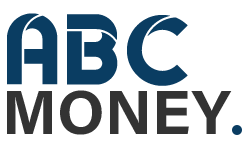‘Quantitative easing’, the practice of purchasing assets with newly created money, could be back on the cards in the Eurozone as the European Central Bank (ECB) pushes for an uplift in growth in the old continent.
ECB President Mario Draghi has a challenge on his hands to overcome low inflation in key territories and therefore could sanction a cut in interest rates in centrally controlled bank deposits. In order to encourage lending the ECB even have the power to impose an interest rate of -0.2% on their deposits, with banks effectively being charged by the ECB for handling their reserves.
This policy aims to make cash flow more freely as banks are encouraged to offer more loans to individuals and businesses within the Eurozone. This could help to counter low inflation which is estimated to be as low as 0.1% in key Euro territories, far lower than the ECB’s target figure for inflation of close to 2%.
Largely due to crude oil prices and wider international energy costs, negative inflation or deflation as it is more commonly known – eg falling prices – has been experienced in certain European economies this year. Core inflation, which does not include variable energy or food prices, is also too low for the ECB’s liking.
For ECB President Draghi – and indeed any other financial authority figure – deflation is a key problem as it can increase debt problems and slow consumers or businesses in their spending habits.
As certain European countries desperately need to improve their competitiveness in the international market – such as Greece, Cyprus and Spain – deflation across the Eurozone means they have to lower prices, which is an obvious potential obstacle to growth.
It is therefore a major priority for Draghi and the ECB to provide the stimulus to increase pan-European inflation.
Buying financial assets from governments, such as bonds or debt, with freshly created money, is the quantitative easing tactic expected to be more widely implemented to push down interest rates more efficiently than the central European bank’s traditional interest rate policies do.
Across the Atlantic the situation is quite different and the US economy appears to be several steps ahead. Unemployment is decreasing in the US, the economy is growing and inflation is not causing an issue as it is for the Europeans.
The US’ central bank, the Federal Reserve, has now gone a year without having to rely on quantitative easing and could soon even raise interest rates.

